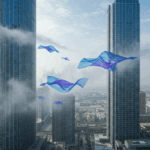Introduction
Have you ever walked through a city and instantly felt its rhythm—how it flows, connects, breathes? That’s not just a coincidence or luck. It’s urban planning at work. As cities expand at a record pace, how we design and organize urban spaces directly affects how people live, move, and thrive. Urban planning isn’t just about zoning and maps—it’s about people. It’s about making cities not only bigger, but better.
1. The Everyday Impact You Don’t See
You might not notice great urban planning when it’s done right, but you’ll certainly feel its absence. Ever been stuck in traffic in a city with no decent public transport? Or tried to find green space in a concrete jungle? Poor planning creates daily frustrations. Good planning? It smooths out the edges of city life, making it easier to commute, connect, and unwind.
2. Mobility Is Freedom
Cities that prioritize walkability, public transport, and cycling infrastructure empower residents. Instead of spending hours behind the wheel or in gridlock, people can move quickly and affordably. That means more time with family, more access to opportunities, and less environmental impact.
3. Green Spaces = Healthy Minds
In dense cities, parks are more than pretty places. They’re lungs for the city, offering relief from noise and pollution. They also give residents, especially kids and the elderly, places to recharge, exercise, and connect with nature. Mental health improves, community bonds strengthen, and stress levels drop.
4. Inclusion by Design
Thoughtful urban planning ensures cities serve everyone, not just the wealthy. Affordable housing near jobs, accessible public spaces, and equitable services mean that growth benefits all layers of society. A well-planned city doesn’t leave anyone behind.
Conclusion
Urban planning shapes how we experience life every single day. As our cities grow, we need more than tall buildings—we need smart design, inclusivity, and sustainability. Because when cities are planned with people in mind, quality of life isn’t just preserved—it’s elevated.






